
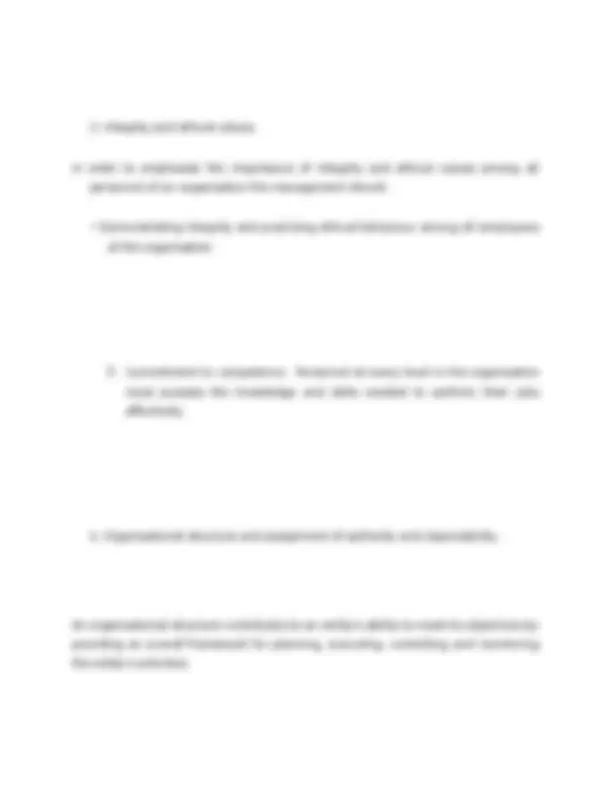
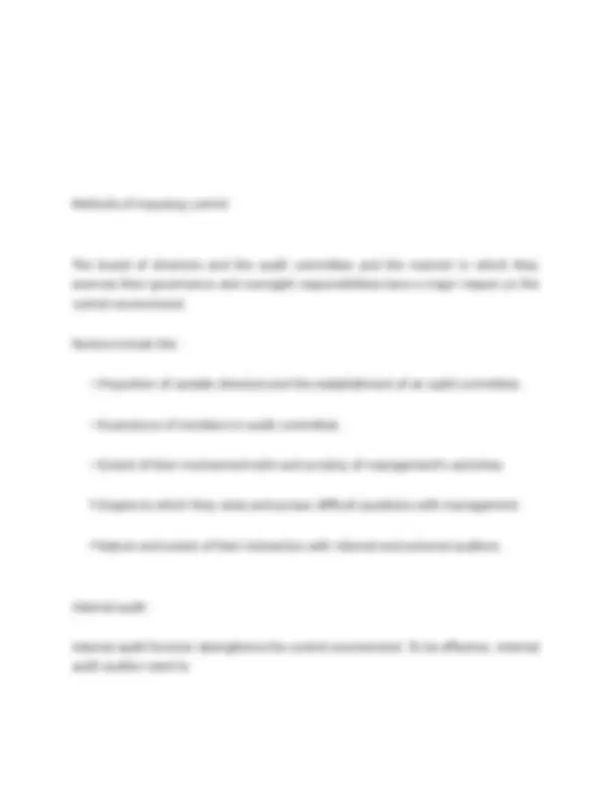
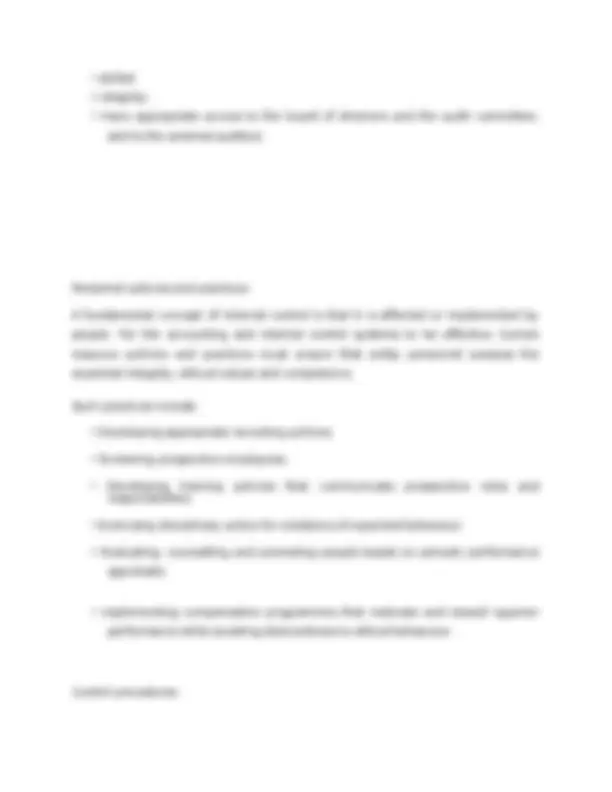
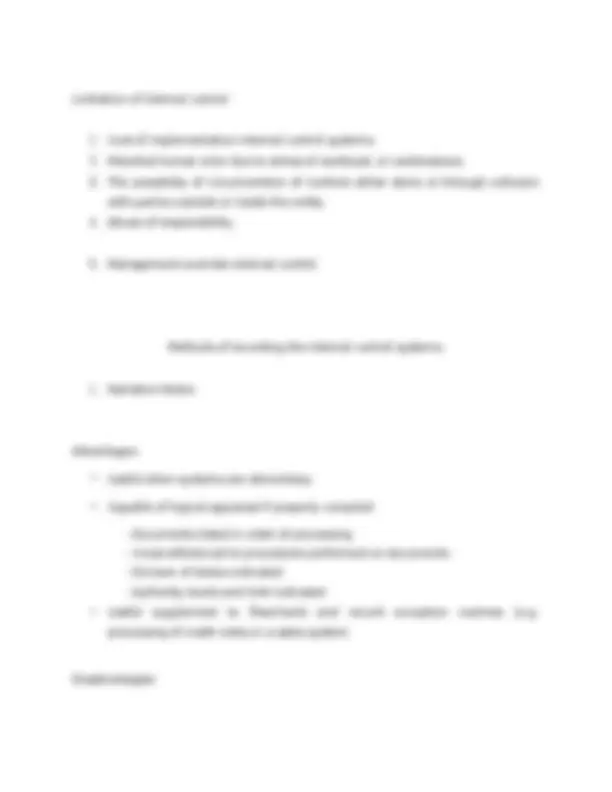
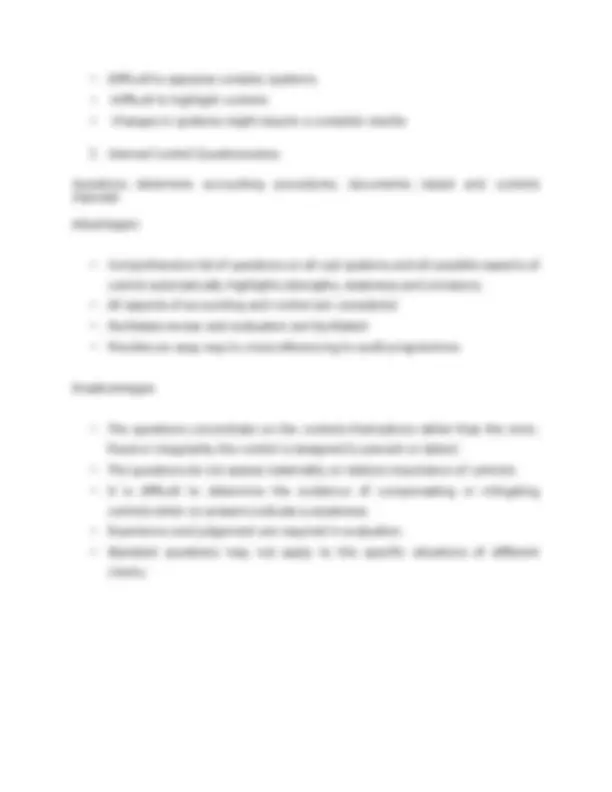
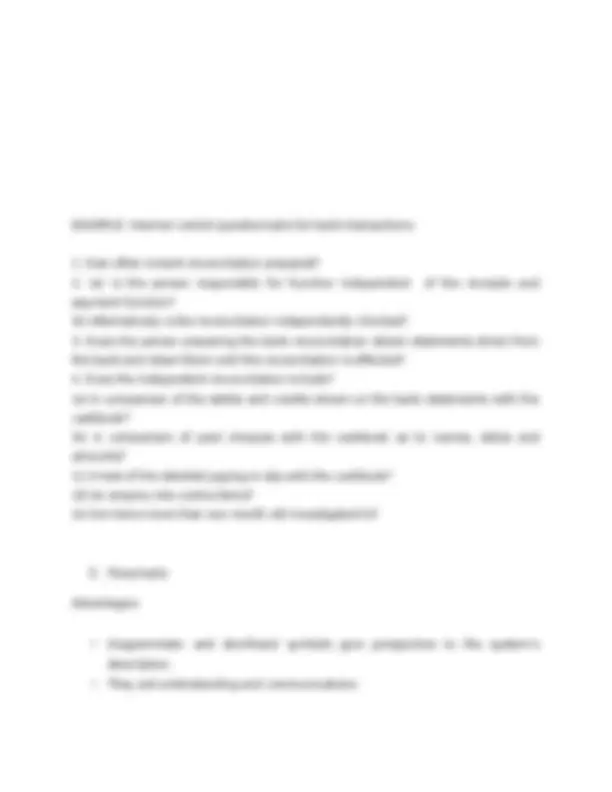
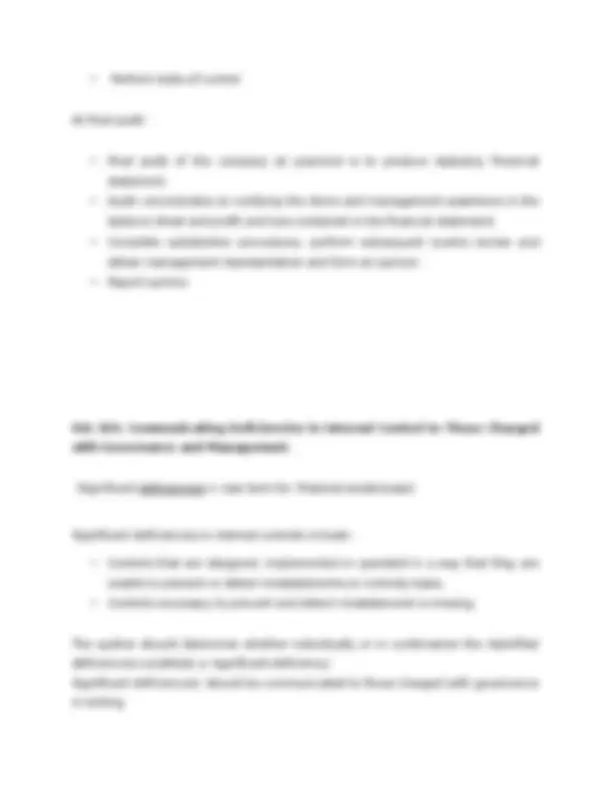
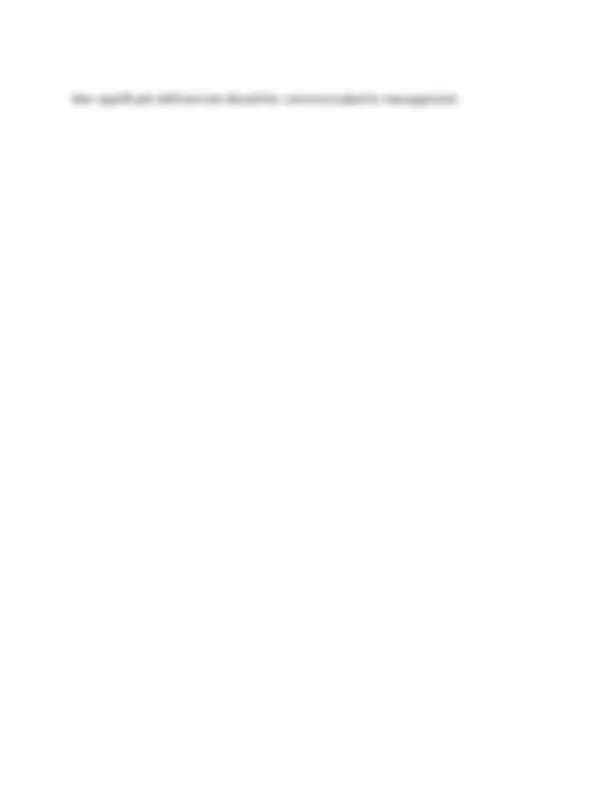
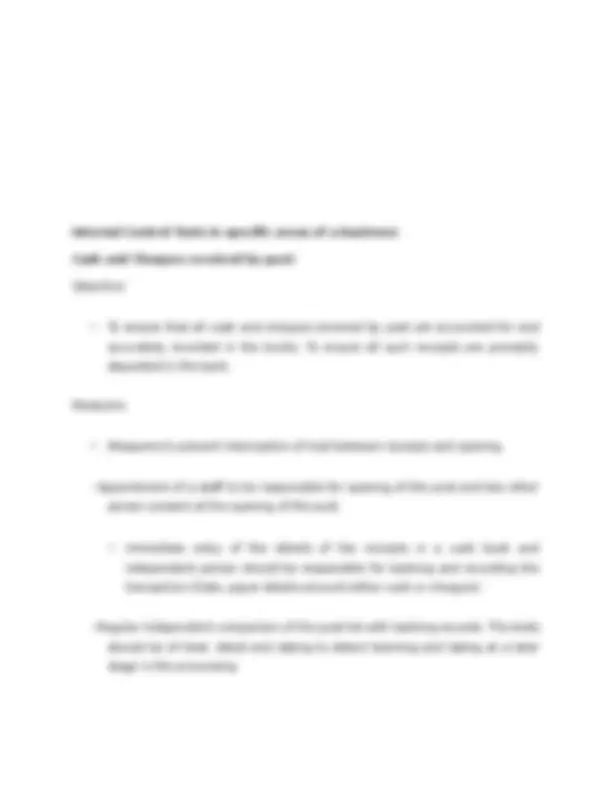
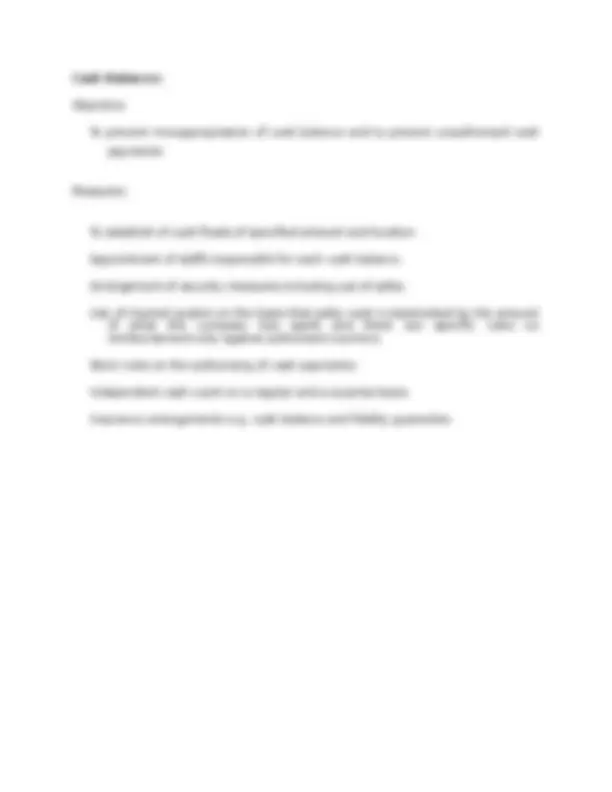
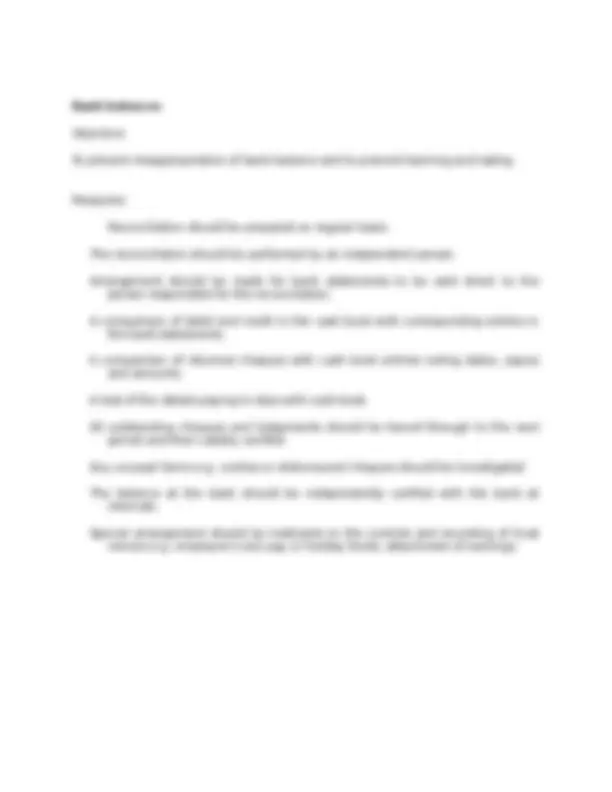
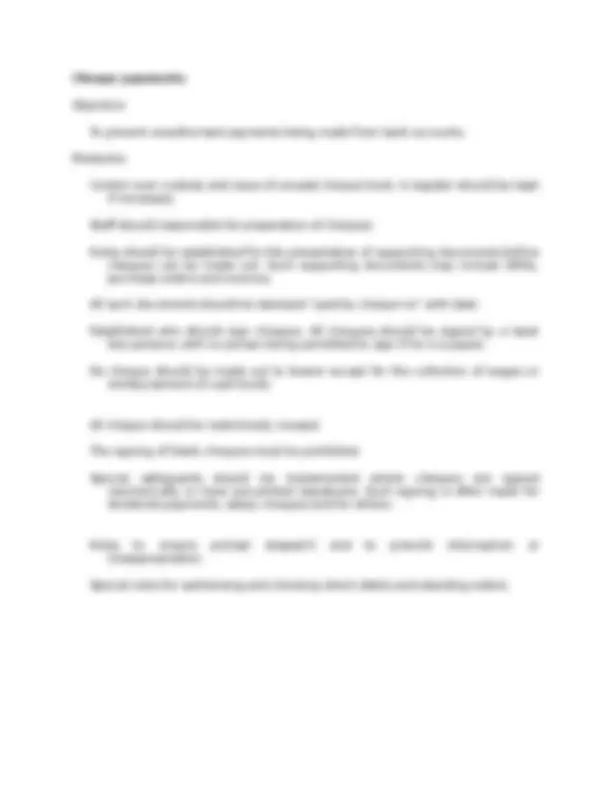
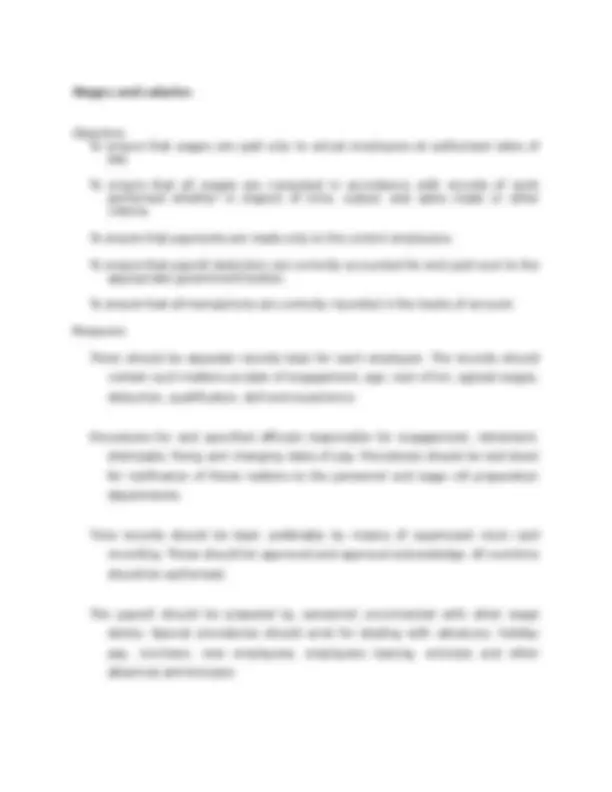
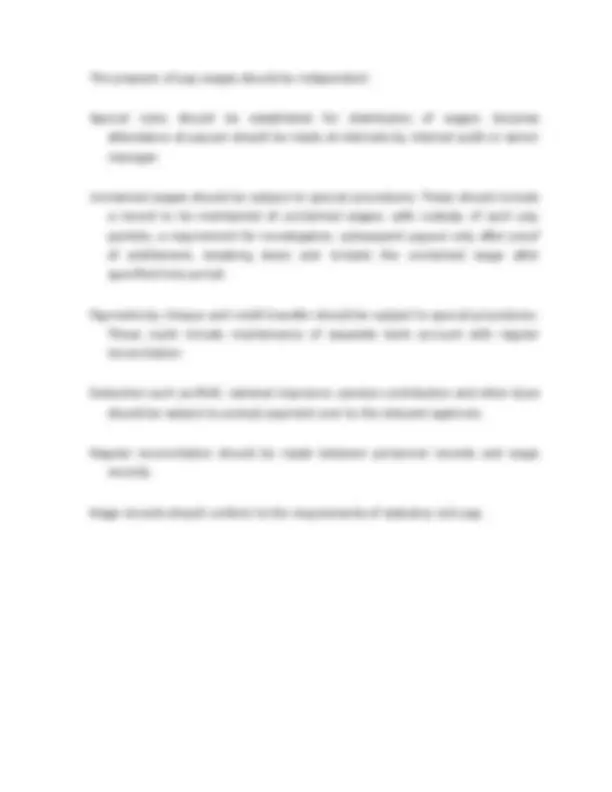
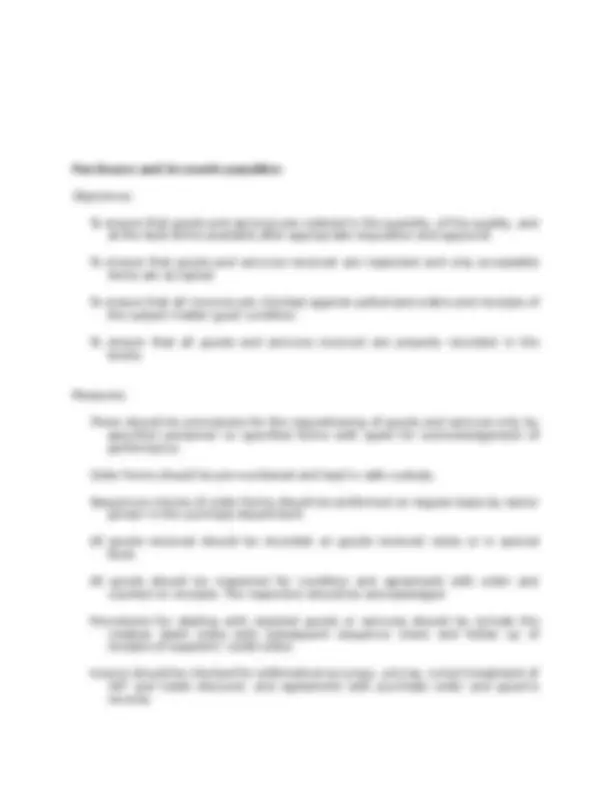
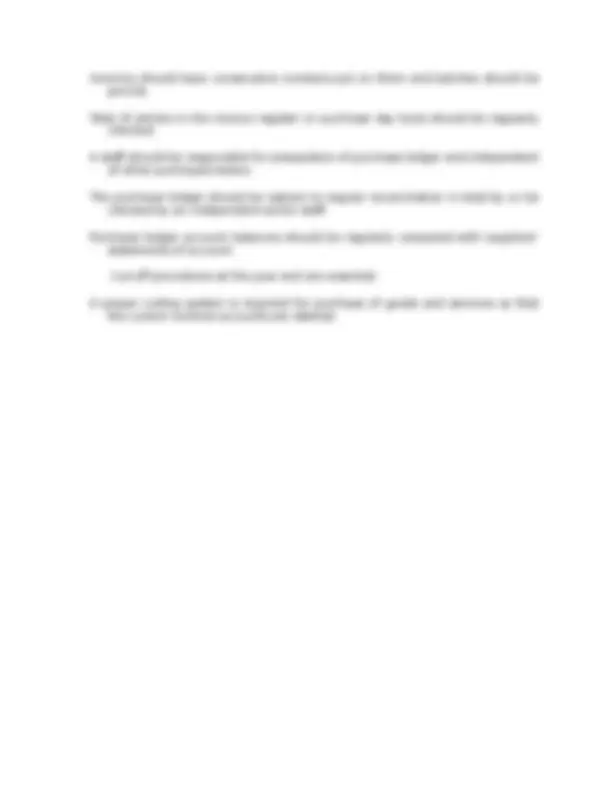
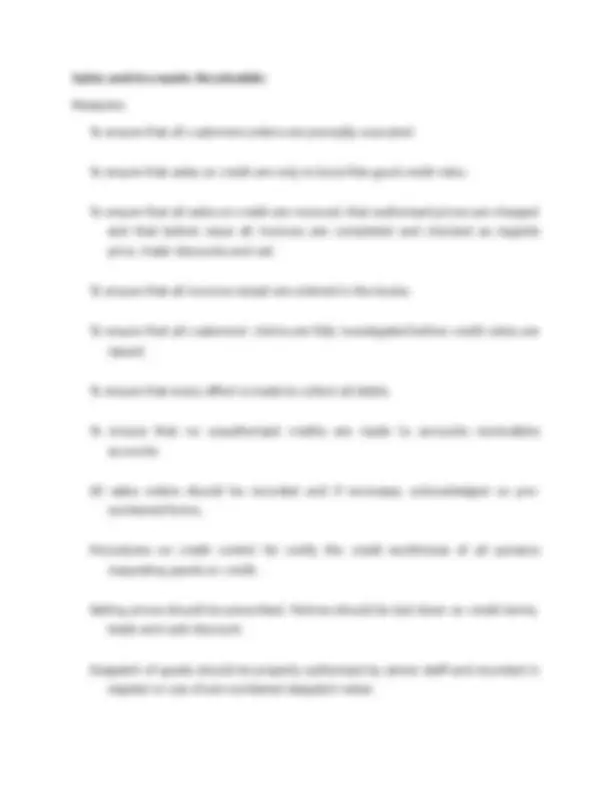
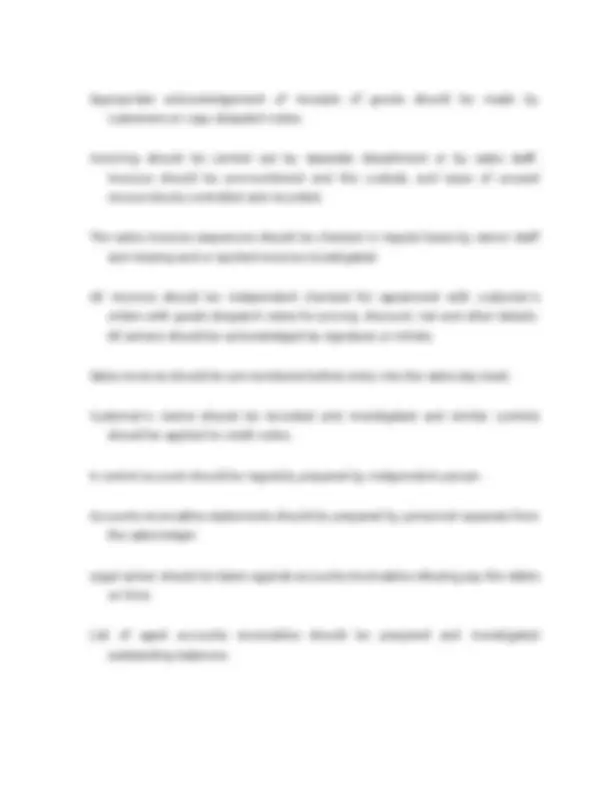
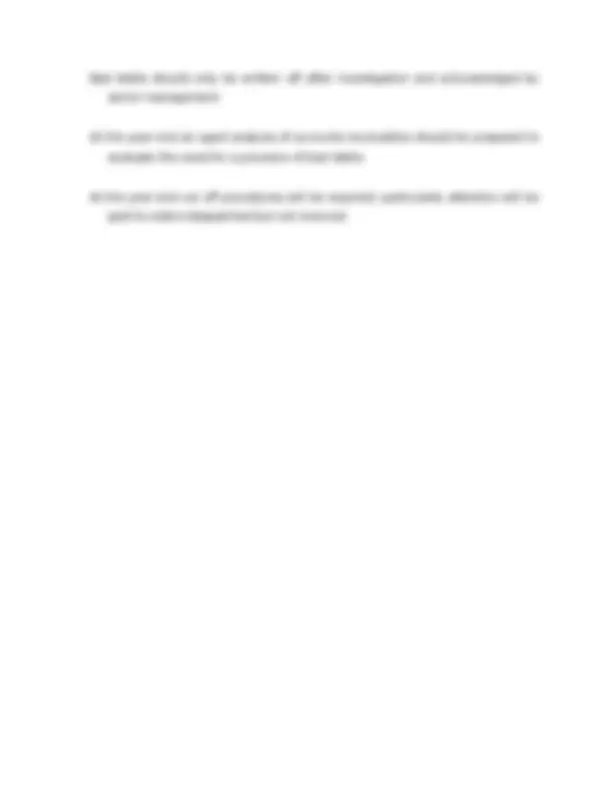
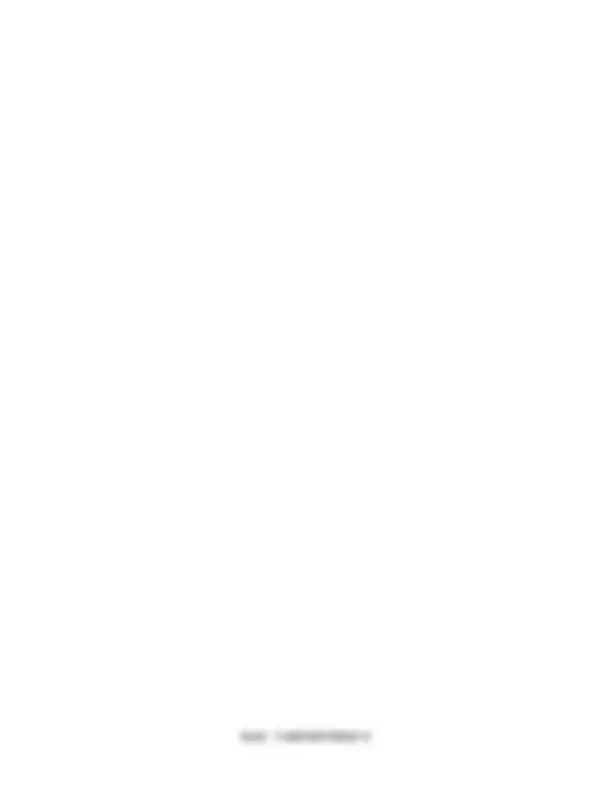
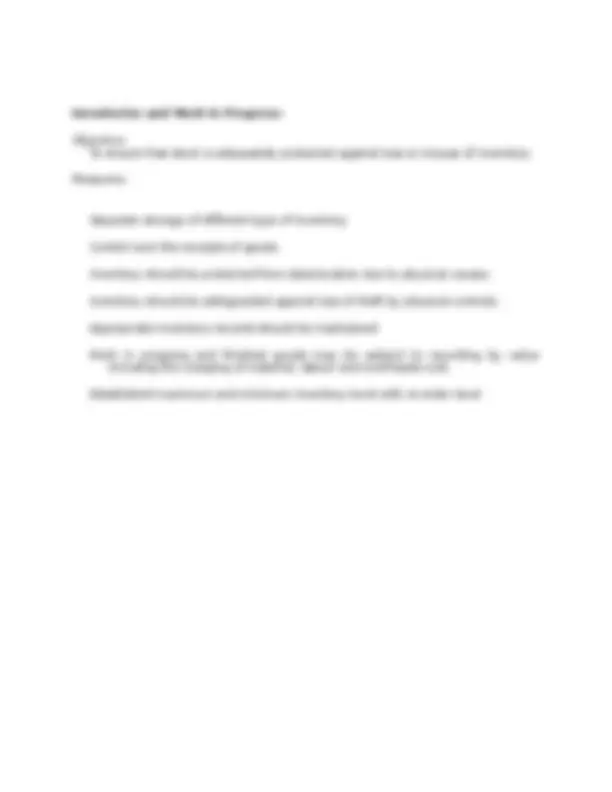


Study with the several resources on Docsity

Earn points by helping other students or get them with a premium plan


Prepare for your exams
Study with the several resources on Docsity

Earn points to download
Earn points by helping other students or get them with a premium plan
Community
Ask the community for help and clear up your study doubts
Discover the best universities in your country according to Docsity users
Free resources
Download our free guides on studying techniques, anxiety management strategies, and thesis advice from Docsity tutors
The internal control environment, focusing on management philosophy, segregation of duties, and cash controls. Management's approach to risk, reliance on informal contacts, attitudes towards reporting, and conscientiousness impact the control environment. Segregation of duties ensures effective checks and balances, while cash controls include measures like imprest systems, independent cash counts, and surprise attendance. The document also covers narrative notes, internal control questionnaires, and testing of controls.
What you will learn
Typology: Lecture notes
1 / 30

This page cannot be seen from the preview
Don't miss anything!























Control Environment:
The control environment is design by the senior management
Factors that are included in the control environment are:
Characteristics that form part of a management's philosophy and operating style and which have an impact on the control environment include the management's:
Methods of imposing control
The board of directors and the audit committee and the manner in which they exercise their governance and oversight responsibilities have a major impact on the control environment.
Factors include the:
Degree to which they raise and pursue difficult questions with management.
Nature and extent of their interaction with internal and external auditors.
Internal audit
Internal audit function strengthens the control environment. To be effective, internal audit auditor need to:
Personnel policies and practices
A fundamental concept of internal control is that it is affected or implemented by people. For the accounting and internal control systems to be effective, human resource policies and practices must ensure that entity personnel possess the expected integrity, ethical values and competence.
Such practices include:
Control procedures:
Types of internal control
No one person should be responsible for the recording and processing of the complete work. This reduces the risk of fraud or error.
access to the authorised personnel. E.g. using password locks.
approval by an appropriate person.
e.g. Trial Balances, reconciliation’s and control accounts.
responsibility for supervision should be clearly set out.
and over and above the day to day routine of the system.
Limitation of internal control
with parties outside or inside the entity.
Methods of recording the internal control systems
Advantages
Disadvantages:
EXAMPLE: Internal control questionnaire for bank transactions
Advantages:
Disadvantages:
An ICQ tries to establish how good the system of controls is. The ICEQ tries to establish if specific errors and fraud are possible.
Method of evaluating an already ascertained system (e.g. by flowchart)
ICEQ is a list of supplementary questions to assess whether desirable controls are present which individually or collectively prevent or detect the error or fraud in the key questions.
Advantages
At Final audit:
ISA 265: Communicating Deficiencies in Internal Control to Those Charged with Governance and Management.
‘Significant deficiencies = new term for ‘Material weaknesses’
Significant deficiencies in internal controls include:-
The auditor should determine whether individually or in combination the identified deficiencies constitute a ‘significant deficiency.’ Significant deficiencies’ should be communicated to those charged with governance in writing.
Non significant deficiencies should be communicated to management.
Cash sales and collections:
Objective:
To ensure that all cash, to which the enterprise is entitled is received, and ensure that all such cash is properly accounted for and entered in the records.
Measures:
Authorised person should be responsible to receive cash for example sales assistants, cashiers.
Evidence of cash receipts for example pre-numbered duplicate receipts cash or cash registers with sealed till rolls. The duplicate receipts form books should be securely held and issue should be controlled.
A staff should be responsible for emptying cash registers at prescribed intervals and agreeing the amount present with till roll totals or internal registers.
Immediately banked the cash and payments for petty cash should be on imprest system.
Independent comparison of agreed till roll totals with subsequent banking records.
Persons handling cash should not have access to other cash funds or maintain sales ledger records.
Rotation of duties and cover for holidays and sickness.
Collections by sales should be banked intact daily. There should be independent comparison of the amount banked and records of the salesmen.
Bank balances :
Objective:
To prevent misappropriation of bank balance and to prevent teeming and lading.
Measures:
Reconciliation should be prepared on regular basis. The reconciliation should be performed by an independent person. Arrangement should be made for bank statements to be sent direct to the person responsible for the reconciliation. A comparison of debit and credit in the cash book with corresponding entries in the bank statements. A comparison of returned cheques with cash book entries noting dates, payee and amounts. A test of the details paying-in slips with cash book. All outstanding cheques and lodgements should be traced through to the next period and their validity verified. Any unusual items e.g. contras or dishonoured cheques should be investigated The balance at the bank should be independently verified with the bank at intervals. Special arrangement should be instituted on the controls and recording of trust monies e.g. employee’s sick pay or holiday funds, attachment of earnings.
Cheque payments:
Objective:
To prevent unauthorised payments being made from bank accounts.
Measures:
Control over custody and issue of unused cheque book. A register should be kept if necessary. Staff should responsible for preparation of cheques. Rules should be established for the presentation of supporting documents before cheques can be made out. Such supporting documents may include GRNs, purchase orders and invoices. All such documents should be stamped “paid by cheque no” with date. Established who should sign cheques. All cheques should be signed by a least two persons, with no person being permitted to sign if he is a payee. No cheque should be made out to bearer except for the collection of wages or reimbursement of cash funds.
All cheque should be restrictively crossed. The signing of blank cheques must be prohibited. Special safeguards should be implemented where cheques are signed mechanically or have pre-printed signatures. Such signing is often made for dividends payments, salary cheques and for others.
Rules to ensure prompt despatch and to prevent interception or misappropriation. Special rules for authorising and checking direct debits and standing orders.